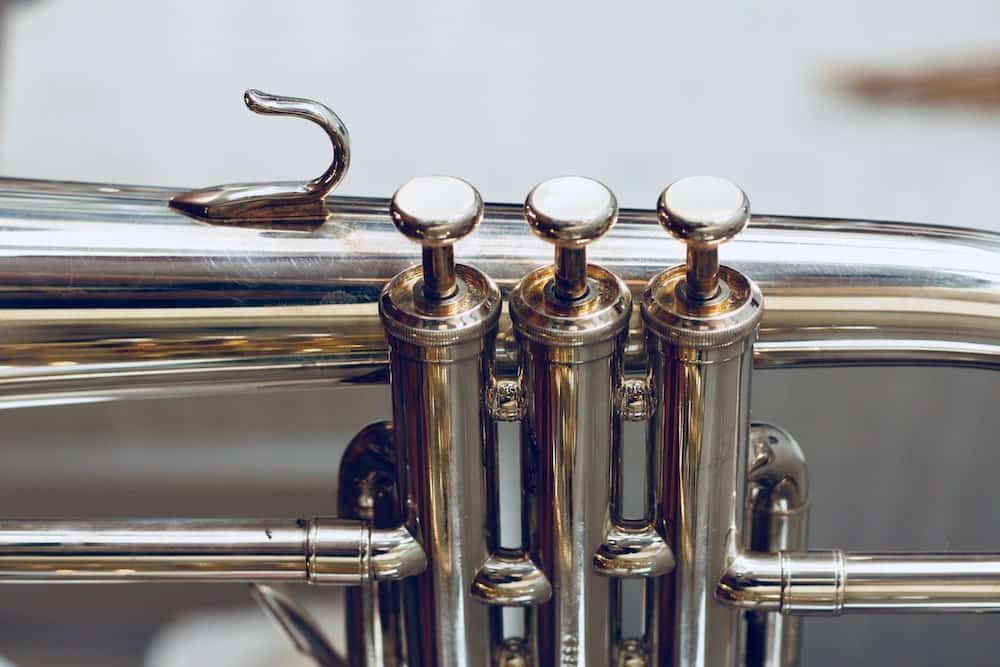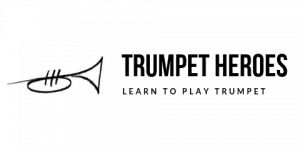Warming up is important.
This site is about helping you become a better Trumpet player, and some kind of daily warm-up routine is key to making that happen. As with any other physical activity there are gains to be made by getting yourself ready to play. If you were getting ready to play a sport, you’d give your body some sort of warm-up so that you’d be more likely to play your best and less likely to hurt yourself. That’s our main goal here, but with your Trumpet playing. As a secondary goal, we’re going to do some things that will have spin-off benefits in other aspects of your playing … like a basketball team warming up by sinking a bunch of easy baskets; or hockey players casually skating around shooting pucks at an empty net.
You are going to be in control of how this process goes. How high, low, loud, soft, long etc will be up to you. I’m going to tell you a lot of stuff, but that’s less important. What really matters are things like how you feel, how you sound and how you progress as a player. You have to monitor those things. With all of these words I’ve already lost most of the kids who ended up on this post. You have to listen to yourself and think about how things feel. Most young players just don’t do those things. Do them.
First thing – pain is the body’s way of saying STOP. There should be no pain when you warm up because you’re going to take things slow and easy. Your first goal is to meet your chops where they are. After you get used to warming up, and as you get stronger you’ll have a really good idea where to start, how to proceed and when you’re ready to meet the day’s playing demands. I’m writing this post as a result of a few recent visits to schools where young Trumpet players were showing up, opening their cases and starting right into rehearsals meeting whatever demands the music had for them. Their chops didn’t have a chance to get ready and those players didn’t sound anywhere close to their potential. Worse yet, they were probably damaging their chops rather than getting stronger. This paragraph should end soon, the way it started. If you feel pain in your warmup, STOP. Try again later, or tomorrow, or the day after that.
Trumpet Warm-Ups: The Basics
Now to the good stuff: What to do.
Play an easy, comfortable low open (no valves) note – not too loud. Most players will play either a G or a low C (scroll down for sound clip examples of these notes). Play this note for four or five seconds and take a break. Think about how that felt and sounded. You want it to feel easy, not at all stressful and you want it to sound good. A good sound is one that sounds like a Trumpet, doesn’t sound strained or fuzzy. There’s a place for quiet playing and a place for playing loud. This is neither. Play that note with a nice, full sound.
Play that note again. This time play it five times in a row, tonguing each note clearly. Four slow quarter notes and a whole note if you like. Play them in a steady rhythm. Rest for a moment and think about how those notes sounded. Were they clear, full, round and rhythmic? Were they sloppy, scratchy and strained? Some of each? (btw I worked with an otherwise good young Trumpet player today who had lots of things going well for him. But … every note he tongued started with some kind of audible wreckage. Upon hearing the phrase “the tip of the tongue at the top of the teeth” he tried it and was miraculously cured. (That doesn’t work for everyone, but it sure did for him.)
It’s not all about the chops. You need to prepare your entire torso, your neck, your fingers and your brain as well. Your warmup is a great time to do all of the things right, so start with your posture Whether you’re standing or sitting you want your back upright, not slouched and your chin up so that the air you’ll need can flow freely through your neck. Hold the instrument up so that the bell is somewhere close to parallel with the floor. Most players allow the bell to droop a little sometimes, but you really want the bell pointed out into the room – not at the floor (or at the ceiling if you’re inclined in that direction). Making this a part of your warmup sets you up to continue doing it. Make sure that your grip on the Trumpet is comfortable and effective. There’s more on that over here…
These warmups are based on what I do every day. Like most professional players I have adopted and adapted the work of great players and teachers. In particular I use the warmup exercises of Knud Hovaldt, the “Flow Studies” by Vince Chicowicz and exercises by Max Sclossberg. These exercises are just a few of those available in print as Trumpet Technique Lip Flexibility by Knud Hovaldt; Vincent Chicowicz Fundamental Studies for the Developing Trumpet Player by Michael Chicowicz, Mark Dulin, Thomas Rolfs and Larry Knopp; and Daily Drills and Technical Studies for Trumpet by Max Schlossberg. If you’re serious about playing the Trumpet well into high school and/or university just go buy these books.
Bits and pieces of the Chicowicz Flow Studies appear all over the internet. Going to those is a half-step. I’ll confess that I picked up a one-pager photocopy at a conference some time in the 1980’s and still have it somewhere. The Fundamental Studies book contains a lot more, and having full access to the thoughts and plans of a great teacher is worth it. The chances of me, or anyone else showing you the perfect warmup are slim-to-none. Having lots of carefully crafted exercises to choose from and being sensitive to exactly what works for you has the best chance to be work for you. There may be some other great books out there, but those are the ones I use to warm up.
Choosing The Correct Trumpet Warm-Up
We need to split up now. You’ll have to choose which warmup best suits you based on what notes you can play comfortably – without straining at all. Most of these Warm-ups include alternate fingerings – use them as you warm up. Some fingerings include an asterisk which I use on my fingering charts to indicate that the third valve slide must be used for these notes to sound in tune. There’s a long explanation of that here, and a better demonstration about halfway through this video.
Trumpet Warm Up #1
If the highest open note you can usually play is Low C (sound clip example below), click here to go to Trumpet Warm-up #1.
Trumpet Warm Up #2
If the highest open note you can comfortably play is the G on the second lowest line on the staff (sound clip below), click here to go to Trumpet Warm-up #2.
Trumpet Warm Up #3
If the highest open note you can comfortably play is the C in the third space on the staff (sound clip below), click here to go to Trumpet Warm-up #3.
Trumpet Warm Up #4
If the highest open note you can comfortably play is the E in the fourth space on the staff click here to go to Trumpet Warm-up #4 BUT, before you do, know that this warm-up includes some Pedal Tones. If you have no idea what that’s about take some time to find out. I’ll eventually get around to a post or a video on that subject. For now just search it on your own or try this guy, or this guy to get you started.
Trumpet Warm Up #5
If the highest open note you can comfortably play is the G at the top of the staff click here to go to Trumpet Warm-up #5 … BUT first read the note above on Pedal Tones.
If you’re playing comfortably above that G, keep doing what you’re doing. You might take that last warmup and add higher partials to it – especially with the Flow Studies, Scales and Arpeggios. Use and extend the Chicowicz flow studies up to your highest comfortable place – possibly playing them in lower keys. The originals are meant to be played in all 7 valve combinations. Check out some of the serious high-note players and what they’re doing. There are big differences between players in how they approach warming up for high register playing so you’ll want to check around to see what suits you best. Remember … “first, do no harm”.
What About Warming Down On Trumpet?
Finally, there is also a concept sometimes referred to as a Warm-down. That’s a whole different beast with some things in common with warming up. The idea is to end your playing day with some gentle, easy playing that relaxes the chops and releases any built-up tension. It’s like putting away your tools after you’ve been working on something for a while … not all of us bother, or are good at it. I’ll get to that another time.

